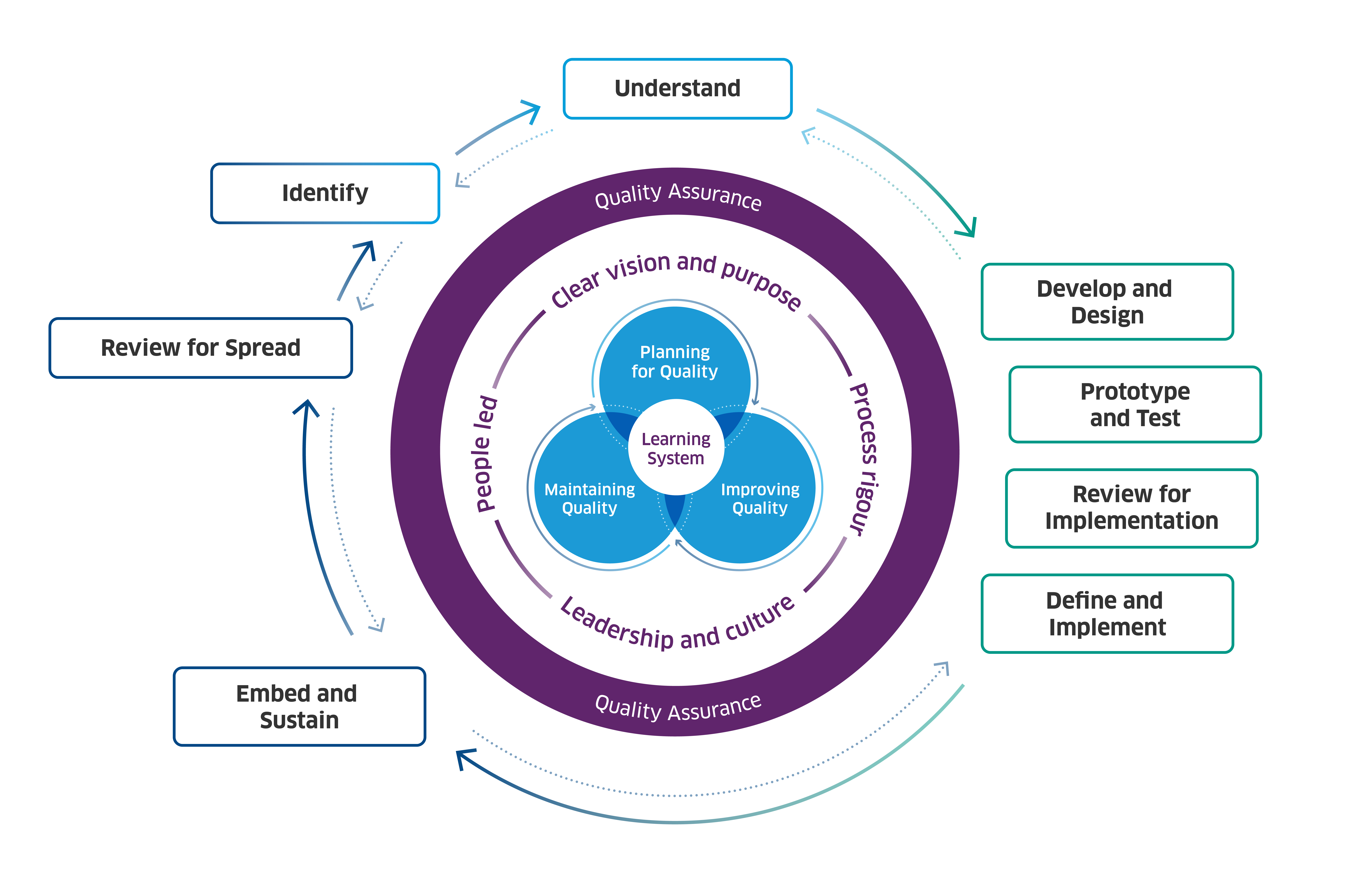Supporting health and social care teams to improve access, experience, and outcomes of health and social care for older people living with frailty. The full case study and summary are available below.

Steps of change
Identify
Identified that older people living with frailty are amongst the most vulnerable in our society. They can be at risk of harm if we do not understand and address their needs, or if our systems and services are inadequate, ineffective or poorly coordinated.
Understand
Understood the evidence base and supported teams to understand their current systems (stakeholders, services, user journeys) and demand for a front door frailty service.
Develop and design
Supported teams to co-design new front door frailty services through the development of an aim, measurement plan, and theory of change and engagement with service users, families and carers, and staff.
Prototype and test
Supported teams to develop and test front door frailty services and pathways, including defining frailty bed space, agreeing the remit of the frailty team, developing frailty pathways, and testing standards operating procedures. supported by the Foundations of front door frailty, Key steps to setting up a front door frailty service and the Focus on Frailty programme change package.
Review for implementation
Supported teams to use quality improvement methods to measure the progress and impact of new front door frailty services and pathways.
Define and implement
Supported teams to define and implement front door frailty services and pathways using the Focus on Frailty programme change package, which supports teams to improve the experience of and access to person-centred, coordinated care for people living with or at risk of frailty.
Embed and sustain
Supported teams to embed and sustain front door frailty services and pathways. Multi-disciplinary frailty teams are essential to embedding the service. Leadership, culture, a whole system approach and ongoing engagement with people are key to sustainability.
Review for spread
Spread good practice by supporting health and social care teams to implement aspects of the Ageing and Frailty Standards and share practice examples, tools and resources a learning system.
Enablers of quality and change
Clear vision and purpose
A clear vision helped to provide direction, motivation, and alignment, including:
- ensuring a whole system approach, which is crucial to the delivery of sustainable change
- a clear system-wide strategic vision for integrated delivery of services for older people living with frailty
Leadership and culture
Leadership and culture were critical in driving the change forward, including:
- an executive sponsor to lead the change and to influence a whole system approach
- integrated/joint leadership across professions of the front door frailty service
- education for everyone working with older adults, focused on developing frailty skills
- a system to share learning and promote professional development
- a robust and skilled workforce with the knowledge to support people living with frailty
People-led
Ensuring the voice of lived and living experience was essential, including:
- forming multidisciplinary frailty teams to embed a person led approach, enabling holistic care based on seeing the whole person
- engaging with service users, families and carers, and staff
- developing strong relationships with the third sector and community supports
Process rigour
Ensuring process rigour was key to ensuring high-quality and reliable outcomes, including:
- using quality improvement and project and programme management, including supporting heath and care teams to:
- create project charters and driver diagrams
- identify and manage risks
- link to local governance frameworks
- measure progress and impact
- undertake continuous data-led improvement in partnership with service users, families and carers
